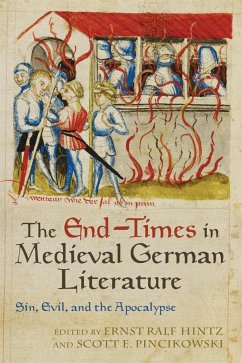
Conflicting Femininities in Medieval German Literature
Versandkostenfrei!
Versandfertig in 1-2 Wochen
179,99 €
inkl. MwSt.
Weitere Ausgaben:

PAYBACK Punkte
90 °P sammeln!
Conflicting Femininities in Medieval German Literature illuminates anxieties about women's roles in society in light of lay religious movements during the High Middle Ages and explains how these anxieties are uniquely addressed in medieval German epics, legends, pastoral works, romances, saints' lives and sermons.













